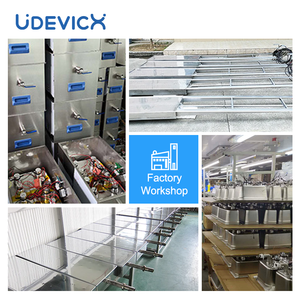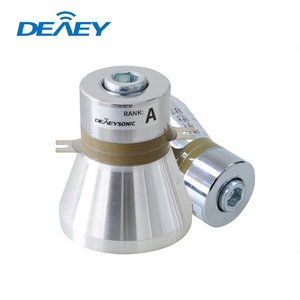Understanding Langevin Transducers
Langevin transducers are a specific type of piezoelectric device that play a crucial role in converting electrical energy into mechanical energy, and vice versa. These transducers are widely used in various industrial and scientific applications due to their reliability and efficiency. Characterized by their resonant frequency and ability to operate in high-frequency ranges, Langevin transducers are essential for processes that require precise energy transformation, including ultrasonic cleaning, welding, and testing.
Types of Langevin Transducers
Langevin transducers come in different variants, each designed for specific applications and operational requirements. Understanding the different types available can help users select the right device for their needs.
- Single Element Transducers: These transducers consist of one piezoelectric element and are commonly used in applications requiring direct energy conversion.
- Multi-Element Transducers: Featuring multiple piezoelectric elements, these units can produce a more powerful output, making them suitable for industrial applications that need enhanced performance.
- Composite Transducers: These combine piezoelectric materials with other components for improved flexibility and sensitivity, ideal for specific research applications.
- Custom Transducers: Designed to meet particular specifications, these are tailored to diverse industrial needs, ensuring maximum efficiency and effectiveness.
Applications of Langevin Transducers
The versatility of Langevin transducers allows them to find applications across a range of fields. Here are some key areas where they are commonly utilized:
- Ultrasonic Cleaning: Langevin transducers generate ultrasonic waves that create cavitation bubbles, effective for cleaning delicate items without damaging them.
- Ultrasonic Welding: In manufacturing, these transducers play a vital role in joining materials through high-frequency vibrations, ensuring strong and permanent bonds.
- Medical Imaging: Employed in ultrasound devices, Langevin transducers are crucial for generating images of internal body structures, aiding in diagnostics.
- Non-Destructive Testing (NDT): Used in industrial quality control, they help detect flaws in materials without causing any damage, ensuring safety and compliance.
Features and Advantages of Langevin Transducers
The efficacy and popularity of Langevin transducers can be attributed to their distinctive features and inherent advantages. These attributes ensure they meet the demands of various applications.
- High Efficiency: Langevin transducers are designed for excellent energy conversion, which results in lower operational costs and improved performance.
- Robust Design: Typically built with durable materials, they can withstand harsh conditions, ensuring longevity in demanding environments.
- Wide Frequency Range: They can operate across a broad spectrum of frequencies, making them suitable for diverse applications.
- Compact Size: Their small dimensions allow for easy integration into different systems, facilitating versatile mounting and usage.




















































